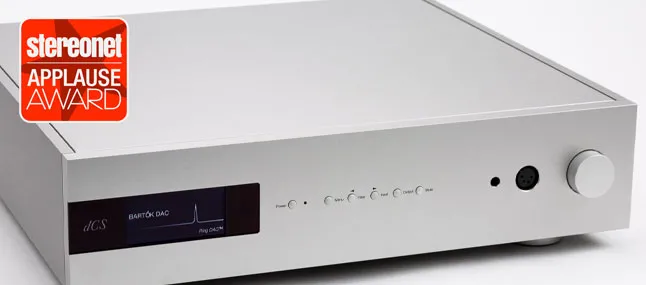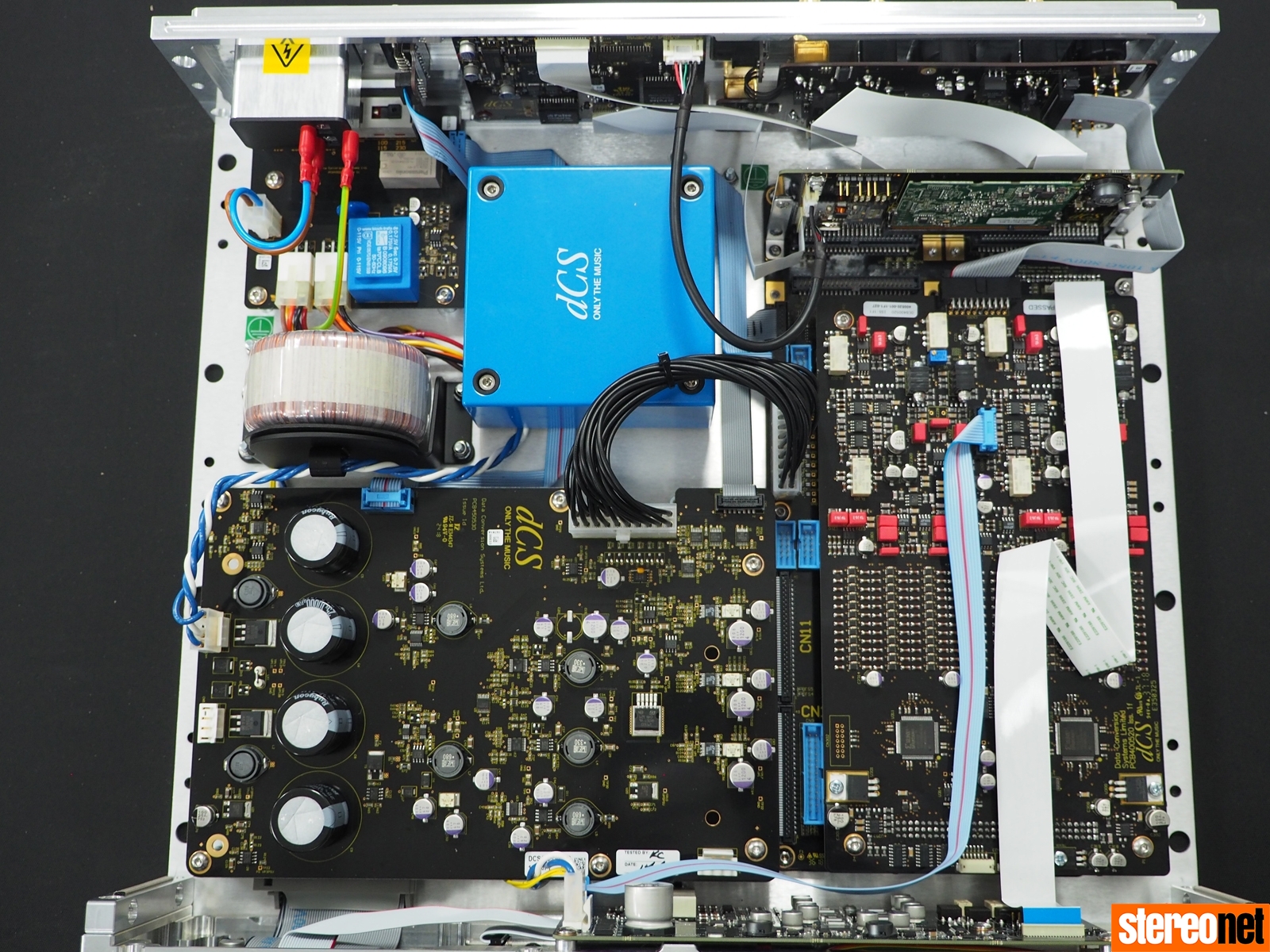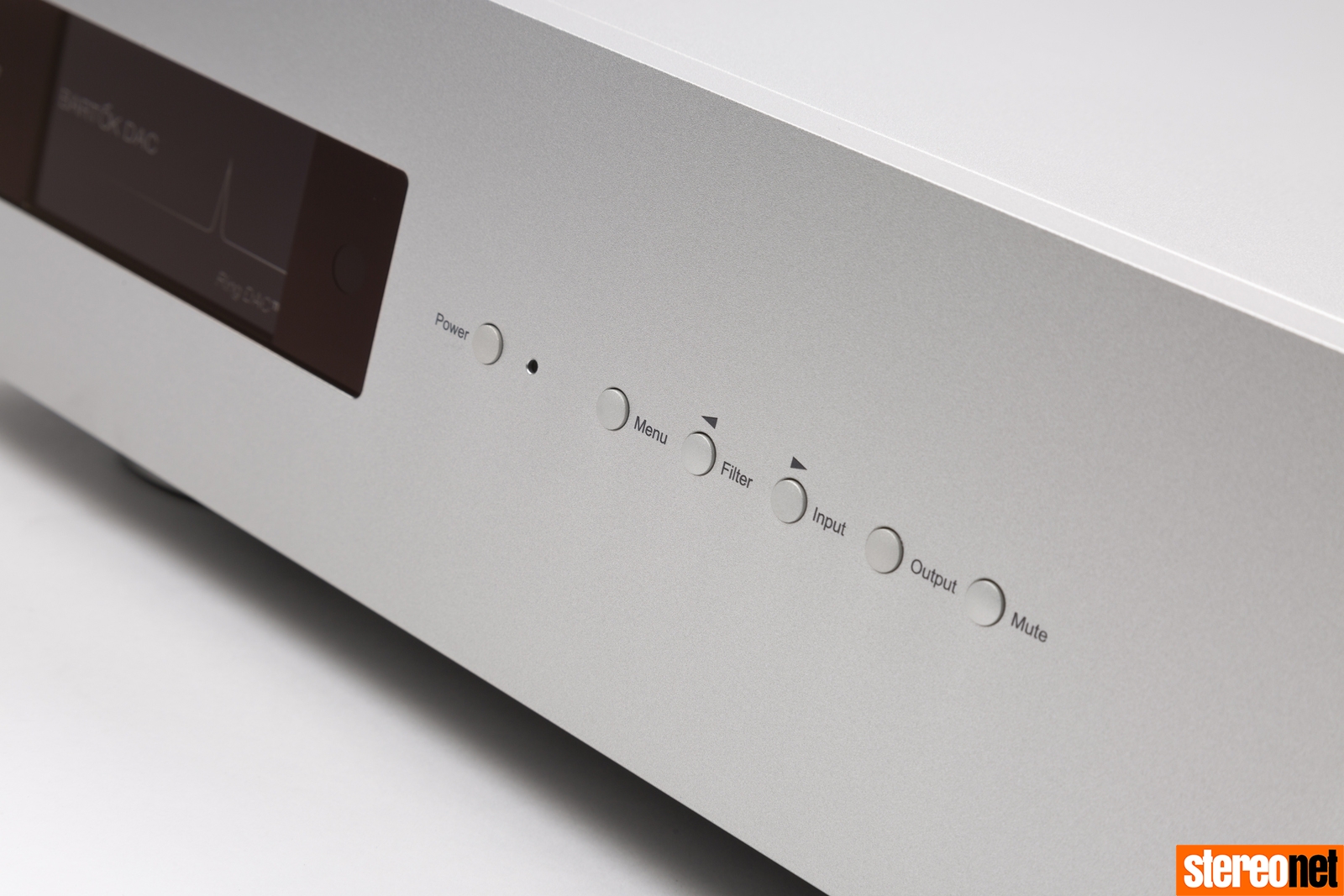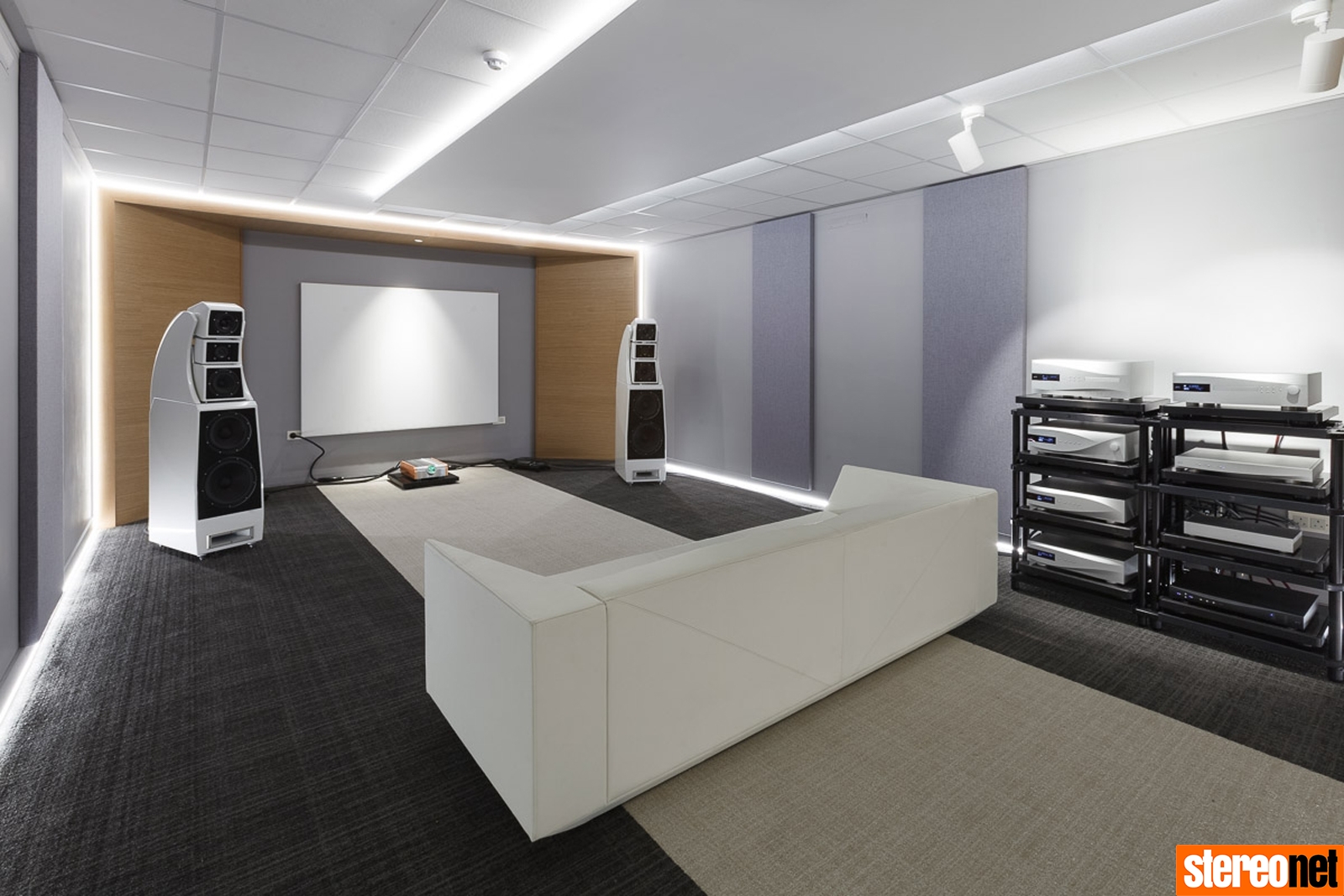dCS Bartók 2.0 DAC Review

David Price auditions the latest version of this top-selling high-end DAC, complete with an important new firmware upgrade…
dCS
Bartók 2.0 DAC
£15,750 RRP (standard)/ £17,750 RRP (headphone version)
__large_full.jpg)
Does dCS need any introduction? After all, the Huntingdon-based company has arguably done more for top-tier high-resolution digital audio playback than any other – starting in the nineteen nineties when it made a consumer version of its studio digital convertor. The remarkable thing about 1993’s pro audio 950 – and the consumer Elgar that sprang from it in 1996 – was that rather than buying in Philips Bitstream DACs and digital filter chips like every other manufacturer at that time, dCS made its own hardware and software.
This had two obvious benefits. First, providing the boffins at dCS knew what they were doing – and as history records, they did – they could make a better sounding digital conversion ‘engine’ than Philips, Sony, et al., who had different commercial priorities that were suited to mass low-cost manufacturing. Second, as the dCS platform used a Field Programmable Gate Array (FPGA) and custom-written software code, it could be updated as and when the engineers improved it – just like we regularly upgrade the firmware in our smart devices now. It doesn’t sound so impressive in 2022, but it was practically the stuff of science fiction in the early nineties…
The result was the Ring DAC, which is so-called because of the way it does the digital number crunching; it was and is designed to minimise errors arising from hardware inconsistencies. Turning digital ones and zeros into an analogue waveform is an inherently noisy process, throwing up digital artefacts which manifest themselves as audible distortion. The dCS system was configured to minimise this phenomenon, and also to correlate it with the music signal as much as possible, so it is less audible to the human ear.
__large_full.jpg)
What followed the original Elgar was nearly thirty years of ever-improving dCS DACs, all featuring incrementally better versions of the Ring DAC hardware and software package. Not only this, but new functionality was added that seems totally mundane now, but at the time, in many cases, it was a world first. For example, back in the mid-nineties, there was no other way of hearing digital audio in any higher resolution than the (then) state-of-the-art DAT format (running at 16-bit, 48kHz), until dCS upgraded its pro DAC offering. Along came the potential for 24/192 PCM, and suddenly music fans – admittedly well-heeled ones – could experience hi-res digital. Those early demonstrations at hi-fi shows were practically religious experiences for some!
Not happy to rest on its laurels, the company introduced one innovation after another. Asynchronous USB audio playback was one such example, appearing first on the Scarlatti Upsampler in 2008 and then on the Debussy DAC the year after. It’s now totally standard and unexciting but a revelation to those wishing to unlock their hi-res music files stored on their computers fifteen or more years ago. Ditto streaming; dCS wasn’t quite the first to market but arguably did it better than anyone else – and was very quick to integrate this functionality into all its DACs via apps. The modern paradigm of a USB-capable, streaming DAC preamplifier – which is pretty much ubiquitous now – is arguably created by dCS.
__large_full.jpg)
BARTOK TIME
In 2019, dCS introduced the new Bartók. For the first time for a dCS DAC, it added optional headphone amplifier functionality, reflecting the huge explosion in the head-fi scene back then. But no less important was its full-spectrum abilities – here was a superb quality, affordable (by high-end standards) digital source component that played a vast array of digital sources and digital audio formats, and bundled proper hi-res streaming functionality via a sophisticated app. Again, it sounds nothing to write home about now, but four or so years ago, it was the shape of things to come.
Having used its predecessor, the Debussy, as my high-end reference for a good many years, I was naturally keen to hear the Bartók – and it was a considerable sonic improvement, as well as being far easier to use and more versatile. And now, sure enough, the Bartók 2.0 is here – offering a long list of interesting and useful tweaks that really move things along. The first version went on to become the company’s best-selling product, so no pressure then…
As before, it combines a network streamer, DAC, upsampler and preamplifier, plus an optional headphone amplifier, in a single chassis. The price went up a bit, adding up to £15,750 in the basic version and £17,750 with its built-in headphone amplifier. For most of us, this makes it so expensive that it’s totally out of reach, but don’t forget that dCS sells no-compromise, cost-no-object products. It’s way cheaper, for example than the company’s top Vivaldi Apex DAC at £34,650, not to mention its additional matching clock, network streamer/upsampler and transport. In effect, Bartók 2.0 is the company’s entry-level, ‘value for money’ one-box choice.
__large_full.jpg)
To justify the extra expense, dCS has added quite a lot – along with a ‘2.0’ suffix to remind everyone how far it has come. James Cook from dCS tells me that Bartòk 2.0 “is primarily a performance upgrade… In this area of its firmware, it is essentially identical to the Rossini, and very similar to Vivaldi. The resulting improvements in Bartòk’s musical performance moves it closer to its bigger siblings, but the more expensive and more electronically ambitious Rossini and Vivaldi remain significant upgrades.”
The mapping algorithm that controls the Ring DAC has been upgraded, which in effect, means the way in which data is presented to the Ring DAC core has been improved. “Better maths to further improve linearity and reduce distortion”, says James. Its upsampling functionality is also now said to be better, and new filter options have arrived. He adds: “While all dCS products share many similarities in terms of hardware, the software running on each unit is bespoke to that model. Designing and implementing the 2.0 mappers for Bartók represents a significant investment in terms of engineering resource.”
Three mapper settings are now available, selectable in the unit’s menu or via the Mosaic app. MAP 1 is the new default mapper, which drives the Ring DAC core at either 5.644 or 6.14MHz. MAP 2 is the original mapper which works at either 2.822 or 3.07MHz, and MAP 3 is an alternative to MAP1 that works at the same frequencies. DSD128 (DSD X2) upsampling is now available, where a DSD x2 upsampling stage is inserted towards the end of the PCM oversampling sequence, before conversion to analogue, dCS says. Also, a DSD Filter 5 setting has been added, which is said to have a relaxed roll-off with a smoother phase response which helps to remove out-of-band noise. The 2.0 software update is initiated either from the dCS Mosaic app, or via the web interface (put the IP address of the Bartók into a web browser on the same network), and takes around ten minutes to complete.
__large_full.jpg)
IN DEPTH
Bartók is the least fancy-looking of the company’s DAC products, lacking the expensively sculpted fascia of the pricier Rossini and Vivaldi. Yet it still presents as an extremely luxurious piece of hi-fi equipment that’s swish enough to make your friends jealous. Like the higher-end models, it sports a rotary volume control with a lovely, smooth action – working in conjunction with a pin-sharp OLED display. This is set into an exquisite aluminium fascia and casework, which really looks and feels the part.
At the time of its launch, dCS Managing Director David Steven told me that Bartók took two years to develop – and is basically a stripped-down version of the higher-end designs, with the internals repurposed for the more compact case. It sports the excellent network card from Rossini, which is one of the finest streaming sources I’ve yet heard. It was specially developed together with Stream Unlimited, rather than just using a simple bought-in solution. Bartók sports the latest Rossini-generation Ring DAC processing board, although it has one less power supply. “We threw everything we had at it, plus the option of a best-in-class headphone stage too”, David told me a few years back.
Bartók plays streaming services like Spotify and TIDAL, and has dCS’s very own custom implementation of MQA, rather than using bought-in chips. Once again, like fine suits, shoes and expensive automobiles, high-end means bespoke! The unit will also play a wide range of file formats including PCM and DSD, and play out music from a NAS drive. Digital inputs include asynchronous USB, AES and S/PDIF. These are all configured via the menu button, which lets you do a not inconsiderable number of things – including changing the analogue output level voltage, swapping absolute phase, selecting the digital filter profiles for PCM and DSD, and switching on crossfeed when in headphone mode if you have the cans-friendly model.

Set-up is pretty straightforward, and the excellent Mosaic app helps with streaming settings. The crisp OLED display really elevates the user experience, telling you the sampling frequency and digital word length of what you’re playing, as well as digital source selected, etc. The company says that great care has been taken to minimise jitter at all stages via the dCS ‘auto clocking’ architecture. Network streaming currently runs at up to 24-bit, 384kHz and DSD128, supporting all major lossless codecs, plus DSD in DoP format and native DSD. As ever, the dCS volume control – shared with its more expensive siblings – is an absolute joy to use and makes using Bartók as a preamplifier, a pleasure.
This streaming DAC preamplifier has so many features and configurations that I could write an additional article detailing them. It’s an enormously versatile product, and even in this extended review, we just don’t have the space to cover everything. Instead, I’ve decided to zoom in on the key difference between this 2.0 version and the original – its new mapper. So for more in-depth information about the Bartók’s general functionality, please refer to StereoNET’s review of the original here. The only difference between the original and the new 2.0 is the software, so the hardware remains the same.
__large_full.jpg)
THE LISTENING
The original Bartók was a really strong performer. I think it was as good, if not better than anything I have heard at or near the price. For me, the only other rival was the Chord Electronics Dave, which was pretty much the same cost at the time of the former’s launch. The sonic difference between the two was akin to comparing coffee against tea – in other words, they’re both excellent, but it depends on your palette. With the launch of the Bartók 2.0, we see the dCS contender getting considerably more expensive but noticeably better sounding. The new mapper brings an unexpectedly large sonic improvement, and removes any criticisms of the previous version I had, at a stroke. I was genuinely surprised by the gains brought, as I toggled between mappers.
Let’s start with the basics. The Bartók running its old mapper has a very highly resolved, spacious and defined sound – one that’s quite a revelation compared to DACs around the $10,000 or more mark, for example. Like its more expensive siblings, it opens up a digital audio file and unpacks it in front of your very ears, before you. This is quite a thing to hear, even on the most mundane of CDs, for example, but one just cannot get such insight from mainstream DACs, streamers or CD players. By comparison, many of the latter sound processed and mechanical, and often cloudy and crude too.
Take I Can’t Go for That by Hall and Oates, for example. No one would ever claim this to be an audiophile recording, but that’s often the best test of a DAC’s mettle. It’s a compressed, opaque-sounding analogue affair, done in the early nineteen eighties. The Bartók on Map 2 (the old one) sounded fun; the acoustic was big, solid and physical, with a strong, driving bass and a solid snare sound. Yet I still couldn’t help myself focusing on the limitations of the recording; vocals sounded a little nasal, and slightly two-dimensional, being pushed right up forward. The production effects were fun, but again seem to shoot out of nowhere and disappear just as fast.

Move to the new Map, and whoah, what a difference! This apparently poor pop recording was unleashed with greater clarity, depth and dimensionality. Things seemed better layered, with the backing synth glide more easily discernible yet set further back in the soundstage. Backing vocals seemed less squashed now, more independent of the rest of the mix, and the lead vocals took on a more agreeable texture, with more space to them, and a fractionally less grainy feel. I was struck by the air around the saxophone on its opening and mid song solos, and the drums seemed to have a more believable texture.
It wasn’t just dimensionality that took a noticeable leap forward, because the general fun factor of the song improved too. I found myself relaxing into the music more, rather than having it machine-gunned at me in a viscerally impressive but not particularly soulful way. One obvious upgrade was the bass, which remained very strong but acquired extra bounce. Alongside this was the rhythm guitar playing, which suddenly became a thing – it seemed to syncopate better with the timing of the lead vocal line, giving the impression of everyone being in perfect sync with one another. Overall then, the song wasn’t as rigid or mechanical sounding on (the new) Map 1, and this made for a surprisingly engrossing listen.
This wasn’t just about saving the reputation of an old US pop hit, as I heard similar things with 4hero’s Another Day – which is a great recording from the early new millennium. Playing its old Map, the Bartók still showed this to have a big, spacious, widescreen soundstage and a lovely fat, rolling bassline; factor in soaring strings and a rich brass sound, and there’s much to like about this soul/rap/funk crossover classic. Indeed, I think anyone would have been impressed, both with the recording quality and the final sound out of the Magico A1 loudspeakers I was using. It certainly gave a wake-up call to the Krell K-300i integrated amplifier that was supplying the power!
Yet, if you listened really hard with a critical ear, there was a slight sense that all the instruments in the recording were pushed just a little upfront; it sounded compressed in the sense that everything was loud and in my face. It also seemed a wee bit processed, which is odd considering that it has a lot of acoustic musical instruments and was obviously recorded to a very high standard. By this, I mean that the Bartók was working great on a hi-fi level, but not so well on a musical one…
 dCS Headquarters Listening Room, Cambridgeshire, United Kingdom
dCS Headquarters Listening Room, Cambridgeshire, United Kingdom
Again, switching to the new Map(per) was a revelation. The first thing I noticed was the improvement in stage depth and space to the recorded acoustic. And the second, which was no less profound, was a new-found urgency to vocal phrasing. Indeed the whole song seemed to mesh better and flow more freely; the lead voice was now a percussion instrument in its own right, and I loved how its phrasing gave a lilting, shuffling quality to the song. Better still, it gained a lovely texture too, no longer sounding synthetic in any way. This all tied in with the snare drum work, which shuffled along with heady abandon, mixing with the delicate hi-hat cymbal sound.
More apparent on this track was the way the Bartók with Map 1 was unpeeling the recording before my very ears – it seemed to gain more fine detail, which in turn meant that I was better able to follow all the different strands of the mix all the way through. This made the Rhodes electric organ playing far more audible than with the old mapper, and seemed to lend backing vocals an ethereal quality that they didn’t previously possess. Last but not least, one of my favourite orchestral instruments, a cor anglais, was better audible, merrily playing away in the background.
That sense of everything being crammed in together more tightly with the original mapper carried over to the rock classic that is Subdivisions by Rush. Compared to the new one, it initially seemed to sound better – as the soundstage seemed compacted and pushed forward, making it a little more edgy and raucous. But the Magico speakers, and also my reference Yamaha NS-1000Ms, soon proved able to reveal what was really going on. Indeed, the better and more subtle your system is, the more you’ll be able to hear the new mapper in a positive way. Map 1 sounded enormously satisfying, being very detailed, textured and layered with a hear-through clarity that precious few other commercially available DACs provide.
This is a nasty track for any source, as it’s pretty compressed and very dense with a lot going on inside; through poor systems it sounds like a horrible dirge, but opens up generously on the very best ones. Here I heard the Bartók reproducing the lead synthesiser with amazing timbral accuracy, separating out all the different strands of the mix with forensic accuracy. I particularly loved the way that things came together in a highly rhythmically engaging way. Dynamics sounded super convincing too, and I could almost feel the sweat on drummer Neil Peart’s brow. Set in front of all this was a synthesiser line that was gorgeously fluid, sounding more like an expressive lead instrument than a backing. Best of all was that I found myself able to listen to this track at really high levels, but ended up with no ringing in my ears – a true sign of a really low distortion source.
__large_full.jpg)
THE VERDICT
 No matter what music you play, at whatever resolution, regardless of source, the latest dCS Bartók 2.0 is a significant upgrade on its predecessor. Better still, owners of the original can benefit from all the improvements with a simple software upgrade – such is the company’s future-proof way of working. It’s a hugely versatile package, bringing even better sound and more facilities to an already state-of-the-art DAC. It’s not exactly cheap, but this product takes you into a rarefied world of elite digital sources with precious few compromises. Hear it if you possibly can.
No matter what music you play, at whatever resolution, regardless of source, the latest dCS Bartók 2.0 is a significant upgrade on its predecessor. Better still, owners of the original can benefit from all the improvements with a simple software upgrade – such is the company’s future-proof way of working. It’s a hugely versatile package, bringing even better sound and more facilities to an already state-of-the-art DAC. It’s not exactly cheap, but this product takes you into a rarefied world of elite digital sources with precious few compromises. Hear it if you possibly can.
For more information visit dCS
David Price
David started his career in 1993 writing for Hi-Fi World and went on to edit the magazine for nearly a decade. He was then made Editor of Hi-Fi Choice and continued to freelance for it and Hi-Fi News until becoming StereoNET’s Editor-in-Chief.
Posted in: Amplifiers | Preamplifiers | Applause Awards | 2022 | DACs | Hi-Fi | StereoLUX!
JOIN IN THE DISCUSSION
Want to share your opinion or get advice from other enthusiasts? Then head into the Message
Forums where thousands of other enthusiasts are communicating on a daily basis.
CLICK HERE FOR FREE MEMBERSHIP
Trending
applause awards
Each time StereoNET reviews a product, it is considered for an Applause Award. Winning one marks it out as a design of great quality and distinction – a special product in its class, on the grounds of either performance, value for money, or usually both.
Applause Awards are personally issued by StereoNET’s global Editor-in-Chief, David Price – who has over three decades of experience reviewing hi-fi products at the highest level – after consulting with our senior editorial team. They are not automatically given with all reviews, nor can manufacturers purchase them.
The StereoNET editorial team includes some of the world’s most experienced and respected hi-fi journalists with a vast wealth of knowledge. Some have edited popular English language hi-fi magazines, and others have been senior contributors to famous audio journals stretching back to the late 1970s. And we also employ professional IT and home theatre specialists who work at the cutting edge of today’s technology.
We believe that no other online hi-fi and home cinema resource offers such expert knowledge, so when StereoNET gives an Applause Award, it is a trustworthy hallmark of quality. Receiving such an award is the prerequisite to becoming eligible for our annual Product of the Year awards, awarded only to the finest designs in their respective categories. Buyers of hi-fi, home cinema, and headphones can be sure that a StereoNET Applause Award winner is worthy of your most serious attention.





